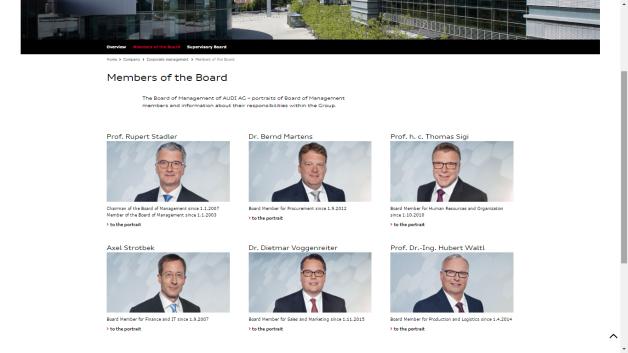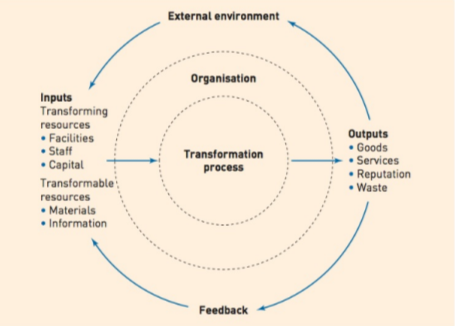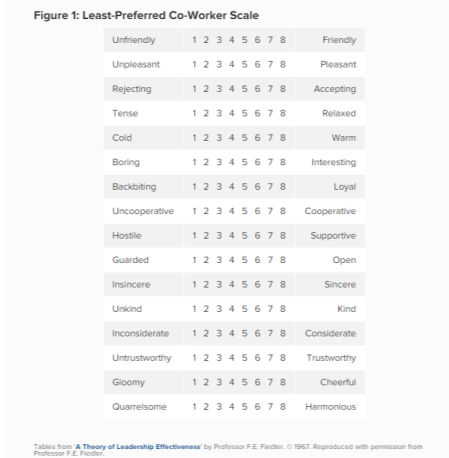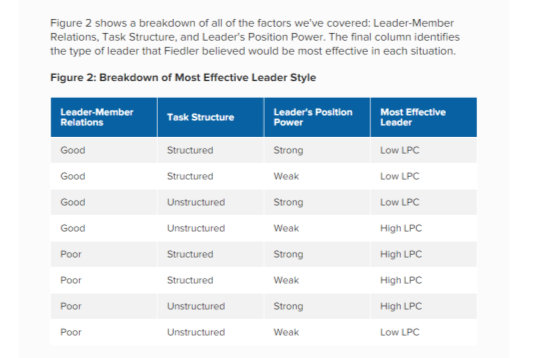Leadership & Operations Management of Audi
- Purpose
Organisation: Audi AG, Head Quarters: Ingolstadt, Germany, Chairman of the Board of Management: Prof Rupert Stradler (Audi, 2016)
This report has been conducted for and requested by the Directors & Senior Management Personnel of Audi AG, to investigate the different approaches/practices towards Operations Management, the overall performance of the organisation. Key emphasis has been placed upon understanding the value of Operations Management within the organisational context at Audi AG; and how effective operational efficiencies can aid businesses to successfully achieve business objectives. The application of different theories and models of approach/practice towards contrasting situations within the Audi AG working environment has been explored; for the resulting information/evidence to be contextually comprehensive.
- Methodology
The information contained within this Briefing Paper has been obtained primarily through secondary research techniques including web-based research, academic journal reading and published books and articles. The reasons behind this, are that it is particularly problematic gaining primary research information from Board Level Directors & Senior Managers due to time constraints, thus much of the information is obtained through organisational publications. However, primary research was utilised on occasions where greater depth was needed or the required information was not obtainable through other methods.
- Results
2.1Audi AG Organisational Structure
Audi AG (Audi) was ‘historically’ established in 1910 by founder August Horch in Zwickau (Central-Eastern Germany). Audi AG operates and distributes cars worldwide, manufacturing cars in 11 Production Facilities across 9 countries in Europe, Asia, North America and South America. Audi AG Group currently employees 84,435 members of staff (November 2016) with a revenue of 58.42 Billion EUR (Full year ended 31 March 2016) & Chairman of the Board of Management is Prof Rupert Stradler (Audi, 2016).
Audi AG is categorised as a large multinational organisation and is a constituent of the Frankfurt Stock Exchange with a current share price as of COP (close of play) on 8th December 2016 at €604.62 EUR (Frankfurt Stock Exchange, 2016). Audi AG has many subsidiary companies including Lamborghini, Italdesign Giugiaro, Audi Brussels and Audi Hungaria Motor Kft; with also an overriding parent organisation of Volkswagen Group sitting above Audi AG in hierarchy. (Audi, 2016)
2.1.1Â Â Â Â Organisational Management Structure
Audi AG is a vast organisation with a Management Matrix/Structure that consists of many layers across various business functions and geographical prominence. “The corporate management of Audi AG draws on its expertise and leadership to promote the interests of more than 80,000 employees, the Audi shareholders and the Audi customers around the globe. The managers of Audi AG form the basis for responsible corporate management.” (Audi, 2016) Prof Rupert Stradler (Chairman of the Board of Management) is at the summit of the Board of Management and is responsible for the forward planning of the organisation, coupled with the performance of his appointed Board of Management. Beneath the Chairman, the Board of Management consists of Board Members responsible for the performance of specific business functions within the organisation globally; these include: Procurement, Human Resources & Organisation, Finance & IT, Sales & Marketing and Production & Logistics. The full list of Audi AG Board Members is shown in Appendix A. Beneath the Board of Management, Audi AG is dissected depending on Geographical Area within each discipline. For example, European Sales & Marketing Director & North American Production & Logistics Director; these individuals will report up to the relevant Board Member. The regions are once again split up depending on individual plants/locations and the Management Structure continues this trend throughout the organisation. See [Figure 1] Audi AG Company Organogram for further clarification of the Organisational/Management Structure within the organisation. (Audi, 2016)

 2.1.2Audi AG Organisational Organogram [Figure 1] (P3, M2, D1)
2.1.2Audi AG Organisational Organogram [Figure 1] (P3, M2, D1)



























































































































Author: Jacob Hood. Ref: (Audi AG, 2016)
Organogram Key:
                       Functional Relationship. Different Departmental Individuals/Functions that work very closely                                   a                         together to achieve Organisational Objectives.
                      Functional Relationship. Different Departmental Individuals/Functions that work very closely                                   a                         together to achieve Organisational Objectives.
                       Line Relationship. Organogram structural links indicating hierarchal structure and                                                                                    a                         subordinates/superiors across departments.
                      Line Relationship. Organogram structural links indicating hierarchal structure and                                                                                    a                         subordinates/superiors across departments.
                            Functional Relationship. Symbol to indicate the whole department works loosely albeit of lesser importance          as                       with all other business functions. Indicated with a symbol to maintain clarity of [Figure 1].
                           Functional Relationship. Symbol to indicate the whole department works loosely albeit of lesser importance          as                       with all other business functions. Indicated with a symbol to maintain clarity of [Figure 1].
                       Lateral Relationship. Different Departmental Individuals/Functions of the same ‘Hierarchal Position’ that              a                        work very closely together to achieve Organisational Objectives.
                      Lateral Relationship. Different Departmental Individuals/Functions of the same ‘Hierarchal Position’ that              a                        work very closely together to achieve Organisational Objectives.
2.1.2Â Â Â Â Overview of Operations Management Within Audi AG
To gauge an understanding of the Key Operational Functions within Audi AG; an explanation of Operations Management in a broader sense and how the Business Function operates within organisations is critical. Joseph Martinich devised definitions in relation to Operations Management, “Operations management is a discipline and profession that studies (and practices) the process of planning, designing and operating production systems and subsystems to achieve the goals of the organisation.” (Martinich, 1997) It is responsible for all the processes associated with the design, planning, control, and production of the products/services that the organisation offers. Operations Management forms the fundamental groundwork of the production of products within organisations; and an efficient Operations Management Function leads to increased profitability, productivity and a more streamlined product build process. Within Audi AG, the key operations of the organisation involve the production of their various car models across the globe. These vehicles have numerous variations and are broadly bespoke based upon the customer’s desired specifications at the point of order. Some of these include: Different Body Shapes, Chassis, Engine Sizes, Left/Right Hand Drive, Transmission, Interior Specifications, Leather Seats, Carbon Fibre Trims etc. (Audi AG, 2016) These variations field complications to the Operations Management Team due to the fluctuating build times between variation of Model/Specification and requires careful scheduling and planning alongside the engineering and manufacturing processes in place to deliver the finished output/product.
2.1.3Â Â Â Â Key Operations/Operations Functions Within Audi AG
The Operations Management Function, which is known as the Production & Logistics & Procurement Functions within Audi AG are responsible for the design, control and delivery of Audi AG’s Key Operations (Production of Audi Vehicles). The Board of Management Member for the Production & Logistics Function is Dr.-Ing. Hubert Waltl and Procurement Board of Management Member is Dr Bernd Martens. (Audi AG, 2016) The inter-relationship between these two functions is crucial to the success of the Operational Processes at Audi AG especially within the ‘Logistics & Inventory Management’ Aspect of the Manufacturing Process. The Key Operational Functions and how Audi AG dissects these functions into Departments within Audi AG is indicated below. The assumptions below are taken from the Neckarsulm, Mid-South Germany Plant, where the production of Audi A4, A5, A7, A8, R8, RS6 and all the individual variations of such vehicles within the Neckarsulm Production Plant. (Audi AG, 2016)
Scheduling. The Operation Function of ‘Scheduling’ is responsible for the design and allocation of resources and setting up the timetable of when the product/service will be completed, following a customer order. (Management Study, 2017) Within the Organisational Context at Audi AG, they name this departmental function ‘Production Control & Planning’. (Audi AG, 2016) They utilise sophisticated computerised systems to ascertain the duration of time that it takes to fully manufacture the product dependent on current ‘Queue Time’, Model & Bespoke Specifications etc. This is then relayed to the Customer to give them an indication of the anticipated delivery time of their Audi Vehicle. A key aspect of ‘Scheduling’ is devising the algorithms and the systems based upon their research of previous ‘Build Time’ of vehicles to create accurate schedules for various models and variations of those models. Scheduling is also responsible for maximising the efficiency of the Production Line, Streamlining Processes and Eradicating Bottlenecks. For Example, within Audi AG the body and chassis of an Audi A4 takes sufficiently longer than the interior. Therefore, a key improvement to mitigate this issue could be to build in a buffer of excess Audi A4 bodies being manufactured in the night shift. This will then sufficiently mitigate the issue that the Interior aspects of the Manufacturing Process take less time to complete than the Exterior Production. Thus, maximising the number of vehicles that can be manufactured within a given time period.
Capacity Management. “Capacity Management is concerned with the matching of the capacity of the operating system and the demand placed upon that system.” (Wild, 2002) Capacity Management within Audi AG is part of the ‘Production Control & Planning” Departmental Function with the core objectives being to manage the current level of resources available in relation to the demand placed upon those processes; to deliver efficient and effective mechanisms that successfully meet Business Objectives. Capacity Management must be able to accurately draw upon historical and forecasted data to ascertain whether the current structure and configuration of Human/Non-Human Resources can sufficiently deal with current and prospective consumer demand. (Management Study, 2017) For example within Audi AG, they must be acutely aware of the Micro/Macro Environmental Factors, Sales Forecasts and balance these with a detailed analysis of the Production/Manufacturing Systems and make informed decisions as to whether internal operational adjustments are required. One of Audi AG’s Business Objectives is to work to ensure that the consumer doesn’t have to wait extensive quantities of time to receive their new Audi Vehicle. Short-Term Demand can be dealt with by increasing the forecasted build time from 6 weeks to 8 weeks. However, if there is a prolonged increased demand for a model of Audi Vehicle, whereby Customers must wait over 8 weeks for their new vehicle; it may be necessary to increase the amount of resources available to manufacture more units of that model (More Labour, Machines Etc.), to successfully meet business objectives. It is the role of Capacity Management to monitor the current trends in relation to the processes and make pragmatic strategic decisions based upon this data.
Transformation Process. The Transformation Process is the Operational Function that addresses the process of taking ‘Inputs’ which include ‘Transforming Resources’ (Staff, Machinery) and ‘Transformable Resources’ (Raw Materials) and turns these resources/materials into finished ‘Outputs’ that are ready to distribute to the consumer. (Pearson, 2016, p.567) See Appendix A for the Transformation Process Model in a visual format. Within the Situational Context at Audi AG, the Transforming Resources include: Production Line Workforce, Machinery and Individual Plants. The Transformable Resources include: Raw Materials such as ‘Vehicle Body/Chassis’, ‘Engines’, ‘Leather Interior’, ‘Electronic Chips’ etc. The Output is the finished Audi Model Vehicle that is distributed to the customer, For Example ‘Audi TT.’ The Transforming Resources assist to construct/transform the Transformable Resources into the final output product. (Pearson, 2016, p.567) At Audi AG, there are a couple of functions responsible for implementing the Transformation Process efficiently and effectively, these being ‘Production Engineering’ and ‘Maintenance Engineering’ and ‘Quality Management’. Production Engineering is responsible for devising innovative processes that can streamline the Transformation Process of producing an Audi Vehicle, thus saving significant costs if these can be implemented effectively. Maintenance Engineering is responsible for the continued operations of seeing through the existing Engineering Processes attributed to building Audi’s vehicles. This needs to be done effectively to ensure that quality products are being produced to the correct schedule set out by the ‘Scheduling’ Function. Quality Management is responsible for the checking and vetting of the finished outputs to ensure it is to Audi AG’s quality specifications. This is crucial to offer a consistent quality of product and ensure customers are happy with the products they receive. (Audi AG, 2016)
Logistics & Inventory Management. “Inventory Management supervises the flow of goods from manufacturers to warehouses and from these facilities to point of sale.” (Manufacturing Tech, 2017) Within the Organisational Context at Audi AG, the Operations Management Function of Inventory Management is incorporated within the Logistics Department. Inventory Management is responsible for supervising the process of managing inventory at various degrees/levels of completion/processing of those materials from Raw Materials through to Finished Products. Inventory Management’s primary objective is to minimise the amount of excess capital that is expended on surplus inventory; the storage, transport and management of such inventory is very costly to organisations. Other reasons behind the implementation of this process is to be able to successfully meet seasonal demand, variation in production demand, ability to take advantage of quantity discounts, highlight quality/other issues in the Production Line and to streamline the Production Process and reduce costs. (Management Study, 2017) Within Audi AG, the Logistics Function must ensure to manage their inventory of Raw Materials (Engine Parts, Interior Materials, Chassis Etc.) so that they do not have excess Inventory costing the business money through unnecessary storage of such materials. Audi AG implement an Operational Approach called Just-In-Time (JIT) which will be explored in detail below, however broadly speaking it ensures the delivery of materials from Suppliers at precisely the time at when they are required in the Production Line. This program is devised in association with the Scheduling Function and mitigates the risk of unnecessary Raw Materials Inventory. Audi AG also must contend with the matter of ‘Finished Goods Inventory’ (Completed Vehicles). The approach within Audi AG is to ensure to sell such stock as quickly as possible while the vehicles are worth the most money, often through promotions on certain models and incentives to purchase the Models/Variations whereby there is excess ‘Finished Goods Inventory’. (Management Study, 2017) Audi also removes this form of inventory through offering the vehicles as Company Cars or through Employee Centred Incentive Schemes. (Audi AG, 2017) It is the role of Inventory Management to also prevent these occurrences from happening and analysing Sales Trends & Forecasts to minimise excess ‘Finished Goods Inventory’; as the costs to store and the depreciation of the vehicles reduces the profitability of the organisation.
     2.2    Key Operational Approaches To Operations Management
2.2.1Â Â Â Just-In-Time Philosophy/Theory
The Just-In-Time Philosophy (JIT) is primarily used within Manufacturing/Retail focused organisations, however the theory can be applied across a range of different market sectors. Just-In-Time (JIT) refers to the process of the supply of materials, either from external suppliers or from other areas within the organisation, delivering the items to the relevant department/area of the business at precisely the time that they need it. The main objective being to achieve reduction and mitigation of surplus ‘raw materials’ within the organisation with a view to increasing productivity, (Toyota Global, 2017) “The art of ‘just-in-time’ production consists of keeping intermediate stock levels down to an absolute minimum, yet none the less having each part arrive at the predetermined point at precisely the right time.” (Audi, 2017) JIT is a Production Model where items are manufactured/created to meet demand, not created in surplus/advance of need. (Tech Target, 2017) Within the Organisational Context at Audi AG, implementing Just-In-Time within the Procurement Process can significantly streamline the Production-Line Process and lead to increased productivity. For Example, within Production Line A at Audi Neckarsulm Plant, Germany the Scheduling and Logistics Department will utilise sophisticated computer systems to ascertain the quantity of each product is required to produce a given number of cars per day i.e. (500 Michelin & 750 Continental Tyres Per Day). The suppliers for these tyres will then be allocated a precise time slot to deliver the items ‘Just-In-Time’ for when they are required in the Production Line Process. This can assist to eliminate waste, inconsistencies, unreasonable requirements thus resulting in increased productivity in the line. (Toyota Global, 2017)
2.2.1.1Â Â Â Advantages of Applying Just-In-Time Philosophy (JIT)
– Lower Stock/Raw Materials Inventory results in a significant reduction in storage space which saves capital in rental and insurance costs. (Tutor2U, 2017)
– As stock is only purchased when orders are placed, it results less working capital tied up in stock, which can be invested elsewhere in/outside the business. (Tutor2U, 2017)
– Mitigates the issue of un-sold finished stock being produced due to sudden & non-forecasted increases in demand and prevents the risk of stock perishing due to it only arriving when it is needed to be used. This can increase Profitability within Audi AG due to unnecessary capital not being expended on wasted materials/stock. (Tutor2U, 2017)
-Drives higher standards on the Production Line and with Suppliers due to there being little room for error with Minimal Stock retained to account for errors on the Production Line and very precise Delivery Slots can ensure Supplier Standards are maintained, thus increasing Productivity of these aspects within Audi AG. (Tutor2U, 2017)
2.2.1.2Â Â Â Disadvantages of Applying Just-In-Time Philosophy (JIT)
– Little/No Room for Error. This is a big contributing disadvantage to the system for both the Production-Line. Minimal stock is kept for re-working faulty products due to the implementation of this process, therefore a lot of pressure is placed on the Production-Line to get things right first time. (Tutor2U, 2017)
-Heavily Reliant on Suppliers. Suppliers are allocated a small-time slot to deliver the correct amount of the product that is specified by the Scheduling and Procurement Functions. If they miss their slot, deliver incorrect quantity/type of materials this can cause the Production Line to falter, meaning less vehicles are made, productivity is decreased and in-turn profitability. (Tutor2U, 2017)
-There is no spare finished stock to cater for unexpected increases in demand, however the flexibility of the system means that it can react quickly to demand changes. Albeit this will not be as rapid for the consumer as having finished stock ready to be distributed. (Tutor2U, 2017)
                 2.2.2Six Sigma
Six Sigma is a widely used Operational Approach towards Operations Management and is frequently applied within Manufacturing Businesses, however the fundamental processes also apply within businesses operating within the Service Industry. “The Purpose of Six Sigma is to reduce process variation so that virtually all the products or services provided meet or exceed customer expectations.” (DTI, 2017) Six Sigma adopts a very data driven, disciplined method for eliminating defects within processes and promoting business improvement within organisations. (iSixSigma, 2017) Within Audi AG, this could mean the Manufacture of a Car Model or the Service offered to customers throughout the Sales Process. (Audi AG, 2016) “Six Sigma is able to show quantitatively how a process is performing and to achieve ‘Six Sigma Status’, a process must not produce more than 3.4 defects per million opportunities.” (iSixSigma, 2017) Six Sigma is dissected into three core elements including: Process Improvement, Process Design/Re-Design & Process Management and will be explored below.
                     2.2.2.1Process Improvement
The Process Improvement aspect of the Six Sigma Model addresses the concept of improving existing processes with the ultimate objective of increasing the quality of product/service that the consumer receives and attainment of ‘Six Sigma Status’ within operational processes. Key emphasis is focused on identifying the root cause surrounding deficiencies within Organisational Processes. (DTI, 2017) A Five Step Approach is used to eradicate these deficiencies [See Below].
Define – Define what the issue is. Form a Project Team responsible for the eradication & resolution of the issue. (DTI, 2017)
Measure – Gather data surrounding how the given process is currently operating to gather initial thoughts on what may be causing the problem with the process. (DTI, 2017)
Analyse – Stage where the root cause is identified through testing many theories based upon what may be causing the problem. Thus, the root cause is ultimately obtained. (DTI, 2017)
Improve – The crucial stage of devising/designing the necessary changes to substantially improve the process. (DTI, 2017)
Control – Controlling the effective implementation of the changes and making adjustments/tweaks when necessary if issues arise with the new change in process. (DTI, 2017)
2.2.2.2Process Design/Re-Design
When Operational Processes become significantly degenerative or possess multiple deficiencies, sometimes the most effective course of action is to Re-Design the Process as in its current duration it will never be able to meet Consumers expectations. This process also applies to designing new operational processes for new Products/New Plants etc. (DTI, 2017) Similarly to Process Improvement a 5-Step Process is utilised to re-design/design a process [See Below].
Define – Define the targets/aims and objectives of the new process and the quality of product/service the consumer requires to be produced.
Match – Develop Performance Requirement that are aligned with the targets identified in the ‘Define’ stage. (DTI, 2017)
Analyse – Analyse these Performance Requirements and build an outline framework as to what the basis of the design will consist of. (DTI, 2017)
Design & Implement – The process of designing and implementing the new process/process change. The design must consider Consumer Requirements and can deliver the ‘Targets’ and incorporating the ‘Performance Requirements’ identified in earlier stages. (DTI, 2017)
Verify -Â Ensure the process is operating effectively and as it was designed to do so. Produce Control Mechanisms to ensure that standards are maintained and mitigate the risk of problems arising from this new process design. (DTI, 2017)
2.2.2.3Process Management
Process Management is often perceived as the most complex and time consuming aspect of Six-Sigma. “Process management is a structured approach to performance improvement that centres on the disciplined design and careful execution of a company’s end-to-end business processes” (Massachusetts IOT, 2017) Process Management focuses on operating as a team and a guide as to which activities should be done when and by whom. (Massachusetts IOT, 2017) Process Management is responsible for the overall design of concept and ensuring the employees are acutely aware they are part of a larger picture/process. Ensuring that an end-to-end process is designed enables Key Decision Makers to make Operational Adjustments as they are dealing with one process that is inter-connected rather than dealing with isolated separate processes which can be difficult to control and improve. (Massachusetts IOT, 2017)
2.2.2.4Practical Application of Six-Sigma Within Organisational Context (Audi AG)
The Practical Application of Six Sigma within the Organisational Context at Audi AG is apparent especially within the Production of the Audi TT at the Neckarsulm Plant, Germany. Due to the Audi TT not being a fundamentally flawed process it is not necessary to fully re-design the whole Production Process however a Process Improvement Mechanism with a view to achieving ‘Six Sigma Status’ would be beneficial to the organisation. The first stage would be to Define what the issue is within the Audi TT Production Process and construct a Project Team responsible for resolving the issue. In this instance, there could be a water leak within Audi TT Models. The next stage would be to measure how the current process is currently performing and gathering data surrounding this process to gather initial thoughts on what may be causing the issue. Analysis of the root-cause of the issue is then undertaken. For Example, this could be that there is a fundamental issue with the welding and sealing process across the bodywork, which was due to incorrect code on the machinery. The next stage would be to improve this process through correcting the code and thoroughly vetting all machinery of the same kind on the Production Line. The final stage would be to control the process and prevent this from happening again, through ensuring the Code in the Machinery is checked every day before Production commences to prevent these defects from occurring in the future. (Chris Hood, 2017 & Audi AG, 2017)
2.2.1.1Advantages & Disadvantages of Applying Six Sigma
Six Sigma possesses numerous advantages in relation to fulfilling its objective in eliminating defects and continued business improvement. Six Sigma when administered effectively can lead to increased profitability and decreased costs due to eradicating inefficient processes, thus increasing profitability. (Six-Sigma, 2017) This is an incredibly potent attribute of Six-Sigma. Six-Sigma focuses heavily on consumer preference and strives to ensure businesses consistently meet consumer requirements. This leads to happy customers, repeat business and likely increased revenue. (Six-Sigma, 2017) There are however considerable limitations to the Six-Sigma Process. Six-Sigma often focuses attention on the rigidity of processes and often stifles innovation which can lead to preventing organisations from realising full potential. (Six-Sigma, 2017) Achieving the Six-Sigma target can often lead to poor business decisions being made due to a fixation on achieving the stipulated ‘Six Sigma Status’, For Example a vastly cheaper production method not being utilised due to a marginally higher defect rate, which within some organisations may be the most informed course of action to take. (Small Business Chron, 2017)
2.2.1Â Â Â Total Quality Management Principles (TQM)
“Total quality is a description of the culture, attitude and organization of a company that strives to provide customers with products and services that satisfy their needs.” (iSixSigma, 2017) The Model strives to ensure organisations provide quality within all aspects of the company’s operations. (iSixSigma, 2017) The eight key elements associated with TQM are:
1. Ethics – The Process of implementing an Ethical Code of Conduct that Employees, Associates and Directors.
2. Integrity -The Organisation acts with intergrity and honesty in all processes/areas.
3. Trust – Addresses the process of trust within employees to complete tasks to develop and empower those individuals through responsibility and faith in their competencies.
4. Training – Workplace & Non-Based Training to continually develop the competencies of their workforce.
5. Teamwork – Collaboration of employees working effectively together to achieve mutual goals.
6. Leadership – Leaders empowering their workforce & increasing productivity through effective leadership techniques and interpersonal influences.
7. Recognition – Recognising effort and achievement sufficiently and rewarding such employees accordingly and ethically.
8. Communication – Verbal and Non-Verbal means of ensuring the workforce understands what is expected from them and promoting two-way transparency within the workplace.
Ref: (iSixSigma, 2017)
Ensuring these 8 elements are implemented effectively is key to ensuring the effectiveness of TQM in eradicating errors/defects and increasing productivity within organisations. Without an organisation possessing Ethics, Integrity & Trust they would harm their reputation inside and outside of the business and would be neglectful. (iSixSigma, 2017) Effective Leadership empowers a workforce and sets the Framework to enable Teamwork to organically thrive within organisations. Effective Leadership & Management instils Training within workplace environment with a view to continually developing/evolving the workforce to increase the capacity for increased productivity. (iSixSigma, 2017) Communication enables the application of these processes to be easily understandable across the business. The 8 elements above need to be administered effectively to ensure to mitigate the risk of errors and defects within the Production/Service Provision Process. However, TQM is also then divided into 4 sequential parts in the Practical Application Process called the PDCA Cycle (Plan, Do, Check and Act) sharing some similarities with Six-Sigma in this sense. (Tech Target, 2017)
Advantages – A Total Quality Management System eliminates waste and lowers production costs. (Small Business Chron, 2017)
-Employee Engagement & Participation can be significantly increased through combined work towards improving the efficiency of processes. (Small Business Chron, 2017)
Disadvantages – Often the current Production System Process is temporarily disrupted whilst changes are made to potentially increase the efficiency of this process. However, the improvement of the process is not guaranteed and can cause unnecessary disruption for little tangible benefit. (Small Business Chron, 2017)
-Employees may resist the changes in process as it may have “always been the way things were done” and may result in little effort being put into making the process change a success from such employees.
- Conclusion
In Summary, Operations Management focuses on ensuring that the processes associated with producing Products/Services are conducted efficiently. Operational Approaches can assist to streamline this process and make functions more efficient through the evaluation of the process and making suitable choices as to how this process can be improved. Upon Considerable Analysis, Audi AG possesses a considerably robust Operations Management Function that works efficiently. However, there are areas that the organisation can develop and improve to increase efficiency and productivity of the system. This is shown below in Section 3.1.
- Recommendations for Future Improvements Within Audi AG
- Utilise Effective Scheduling/Capacity Management Streamlining & Efficiency Processes. See (Section 2.1.3 ‘Scheduling’) For Practical Example.
- Capacity Management should frequently monitor Existing and Forecasted Sales Figures to ascertain whether they have sufficient Capacity to effectively deal with consumer demand and advise on operational adjustments to successfully manufacture Audi Vehicles within a suitable build timescale. (See Section 2.1.3 ‘Capacity Management’) For Practical Example.
- Continuation to develop the Just-In-Time Philosophy and fine tuning the process to consistently enhance the process at Audi AG. Key Communication and Inter-Relationships between Operations Functions such as Scheduling, Capacity Management & Logistics will aid to ensure that the correct quantity, model and style of components are arriving at precisely the right time at the correct location.
- References
Audi AG (2016). Available at: http://www.audi.com/content/dam/com/EN/investor-relations/financial_reports/annual-reports/audi-ar-2015.pdf (Accessed: 9 December 2016).
Audi AG – Audi UK, Contact Us (2016) Available at: https://www.audi.co.uk/about-audi/contact-us.html (Accessed: 5 January 2017).
Audi AG – Corporate management (2015) Available at: http://www.audi.com/corporate/en/company/corporate-management.html (Accessed: 9 December 2016).
Audi AG, (2016) Available at: http://www.audi.com/corporate/en/company/production-sites/audi-production-worldwide/neckarsulm.html (Accessed: 29 January 2017).
Audi AG (2016) Available at: https://www.audi.co.uk/about-audi/careers/audi-centre-careers.html (Accessed: 21 December 2016).
Audi AG (2016) Production Sites. Available at: http://www.audi.com/corporate/en/company/production-sites.html (Accessed: 9 December 2016).
Audi World, 2017 Available at: http://www.audiworld.com/news/99/production/production.shtml (Accessed: 31 January 2017).
Chris Hood, Industrial Relations Manager, Honda of the UK Manufacturing, Swindon, Wiltshire
Department for Transport & Innovation, 2017. SIX SIGMA FACTSHEET WHAT IS SIX SIGMA? 1 HOW DOES SIX SIGMA WORK? 1 PROCESS IMPROVEMENT IN DETAIL 3 (no date) Available at: http://www.businessballs.com/sixsigmadtifactsheet.pdf (Accessed: 5 February 2017).
iSixSigma, (2017) What is Six Sigma? Available at: https://www.isixsigma.com/new-to-six-sigma/getting-started/what-six-sigma/ (Accessed: 5 February 2017).
Massachusetts Technology Institute, 2017. Process management and the future of Six Sigma. Available at: http://sloanreview.mit.edu/article/process-management-and-the-future-of-six-sigma/ (Accessed: 5 February 2017).
Management Study, 2017. Inventory management. Available at: http://www.managementstudyguide.com/inventory-management.htm (Accessed: 30 January 2017).
Management Study, 2017. Operations scheduling and workplace planning. Available at: http://www.managementstudyguide.com/operations-scheduling-and-workplace-planning.htm (Accessed: 29 January 2017).
Management Study, 2017. Why and when to avoid holding inventories. Available at: http://www.managementstudyguide.com/when-to-avoid-holding-inventories.htm (Accessed: 30 January 2017).
Martinich, J. (1997) Production & operations management – an applied modern approach TB. New York, NY, United States: John Wiley & Sons.
Pearson, 2017. Available at: https://bookshelf.vitalsource.com/#/books/9781784493516/cfi/575!/4/[email protected]:52.8 (Accessed: 29 January 2017).
Posted and Rouse, M. (2015) What is just-in-time manufacturing (JIT manufacturing)? – definition from WhatIs.Com. Available at: http://whatis.techtarget.com/definition/just-in-time-manufacturing-JIT-manufacturing (Accessed: 31 January 2017).
Small Business Chron, 2017. ‘Advantages & disadvantages of Six Sigma’
Six Sigma, 2017. Six Sigma. Available at: http://www.sixsigma.in/advantages-and-disadvantages-of-six-sigma.html (Accessed: 5 February 2017).
Toyota, 2017. | just-in-time. Available at: http://www.toyota-global.com/company/vision_philosophy/toyota_production_system/just-in-time.html (Accessed: 31 January 2017).
Tech Target, 2017. What is inventory management? – definition from WhatIs.Com. Available at: http://searchmanufacturingerp.techtarget.com/definition/Inventory-management (Accessed: 30 January 2017).
Wild, R. (2002) Operations management: Text and CD-ROM. 6th edn. London: Cengage Learning EMEA.
- Bibliography
- Appendices
Continued Overleaf.
 Appendix A
Appendix A
Ref: (Audi AG, 2016)
Appendix B

Ref: (Pearson, 2016, p.567)
Appendix B

Appendix C
